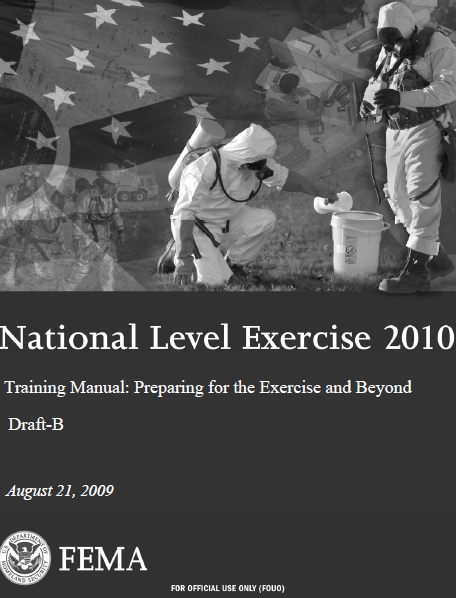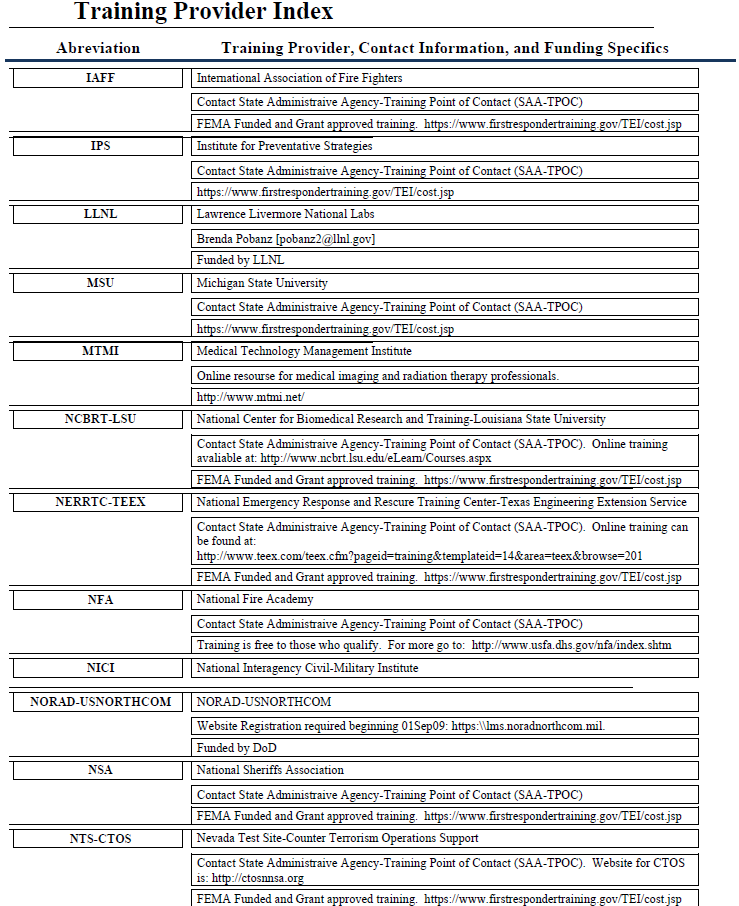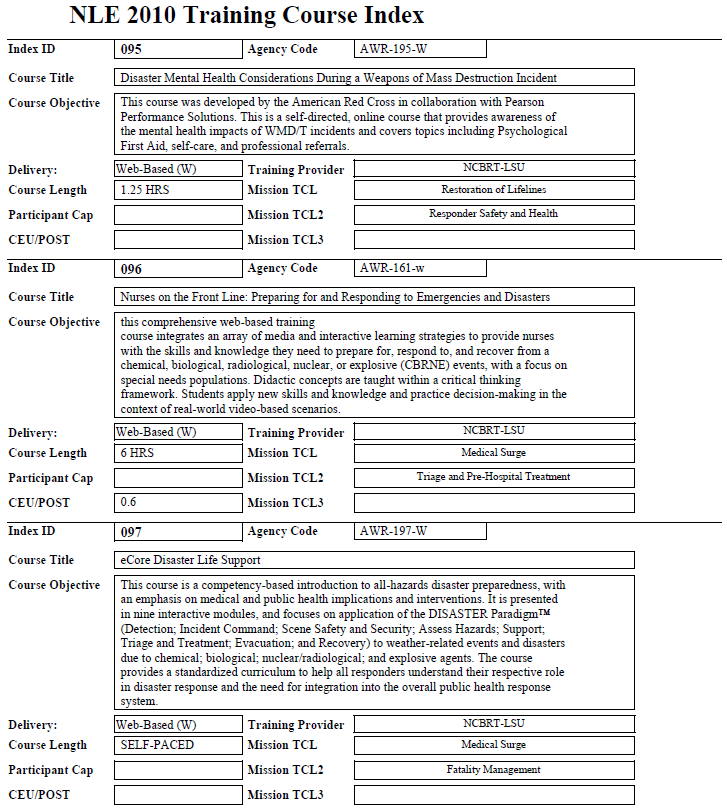 National Preparedness Directorate
National Preparedness Directorate
- DRAFT VERSION 1.1
- 139 pages
- For Official Use Only
- August 2009
Beginning with FY2010 National Level Exercise (NLE) to engage the National Planning Scenario 1-Improvised Nuclear Detonation, the Training Working Group (TWG) has become an integral part of preexercise preparedness. To assist with the exercise preparedness activities, the Training Manual (TM) has been created to attempt to identify training for all levels of response and recovery. The training offered by exercise participants will be captured and indexed in this manual. To accomplish this task, significant participation was necessary from participating Emergency Support Functions (ESF) to build the index and the training aides found in this manual.
The TM is broken down to include training aides by ESF and functional discipline, as defined by exercise play, to assist with refined classification of necessary training for participating agencies and departments. So far, the functional discipline includes Policy and Governmental Administration to address the need for training elected officials and executive leadership in the dangers and risks associated with the detonation of an Improvised Nuclear Device (IND).
In the hopes of keeping the training new and updated, the TM should be refined as new National Planning Scenarios are exercised and/or training has been developed to address gaps identified through the After Action Conference and corresponding reports. In addition, as participant play expands and contracts, the need for refined or new training aides may become evident.
…
REQUEST FOR TRAINING
In an effort to insure that requests for training are met in an efficient and effective fashion for the National Level Exercise 2010, the TWG will be assisting Federal, State, local, private sector and nongovernmental exercise players. The overall goal of the training request process is to assist exercise players with training identification based on the target capabilities being tested in the exercise, target audience identification for the training requests, space acquisition for the players in the actual training courses, making arrangements for “mobile” training as needed, and funding arrangements when appropriate.
The TWG strongly urges all exercise players to track the completion of exercise specific training. Training data will be collected for the After Action Report (AAR) for the National Level Exercise 2010. Through
the AAR process the TWG hopes to be able to identify specific training that assisted the players in preparing them for the simulated incident (NLE 2010).STEP 1: Based on training needs assessments exercise players (or organizations participating in NLE 2010) should review the training manual for training that will enhance capabilities. The TM identifies
training by levels (awareness, performance, and management), by ESF and functional discipline, by delivery method (web-based, mobile, or resident) and by mission target capabilities. Training plans should be developed to meet the needs of the players/organizations.STEP 2: Once specific training courses have been identified as part of individual or organizational training plans players/organizations should begin the process of enrolling in the actual training. Many of the awareness type courses identified in the TM are web-based. Individuals can simply reference the website contained in the TM and complete the training. Mobile or resident training courses will require the player or organization to contact the training provider based on the information contained in the Training Provider Index of the TM. In many cases your State Administrative Agency-Training Point of Contact (SAA-TPOC) can assist you in this process. FEMA Regional Offices, as well as, State Homeland Security/Emergency Management agencies also have training managers/officers that can assist you with the course enrollment process. Training organizations listed in the Training Provider Index typically list available training via online training catalogs. These same on-line sites will also provide you with training registration and enrollment procedures.
STEP 3: Based on your training assessments and plans you may have identified training from the TM that needs to be brought into the field (Mobile Training). Again the SAA-TPOC can assist you in making
arrangements for mobile training. Resident training offered by the training organizations listed in the Training Provider Index can often accommodate multiple participants. The TWG is urging all training
organizations listed in the index to give course acceptance priority to NLE 2010 exercise players.STEP 4: Exercise players/organizations requiring specific assistance on obtaining or arranging for training can also contact the TWG for assistance. Questions concerning the training listed in the TM can also be directed to the TWG. The following email address has been established for direct access to the TWG.
…


